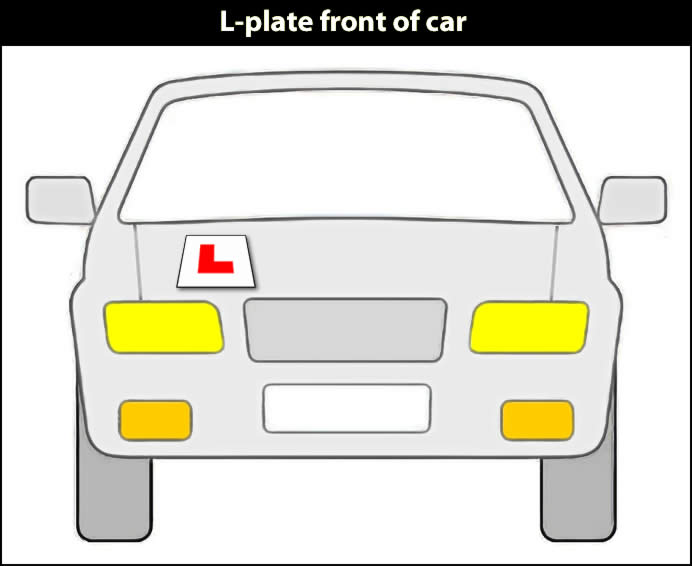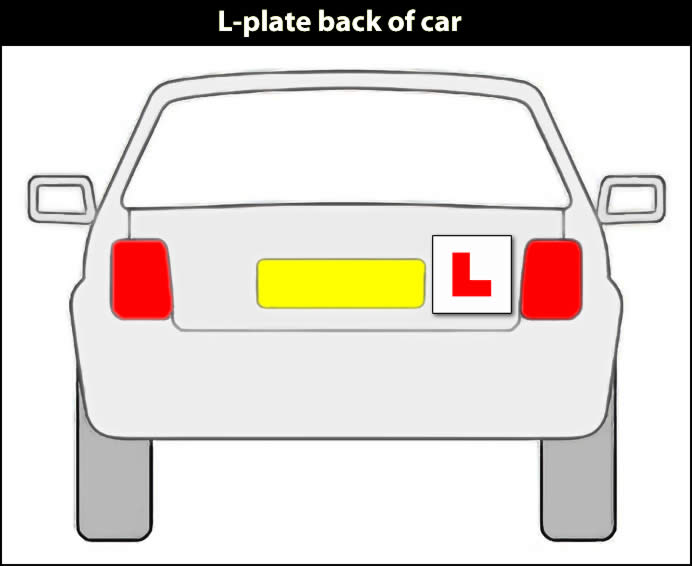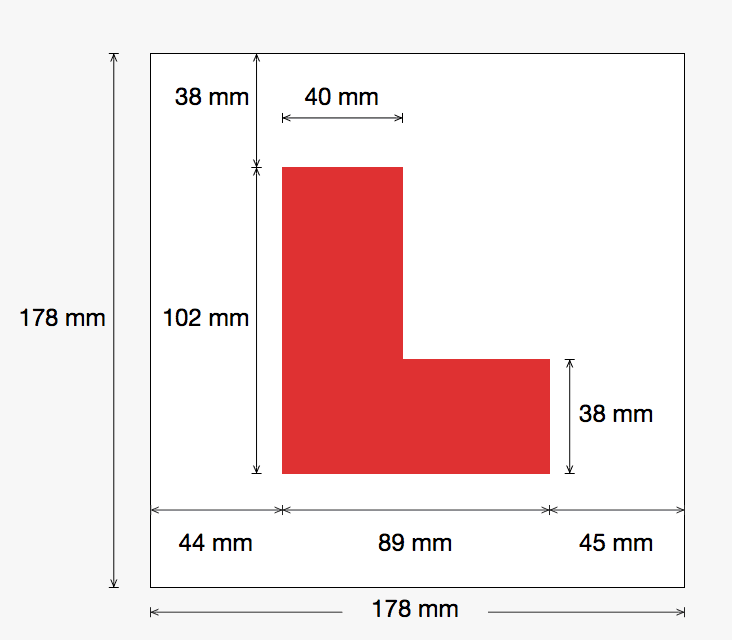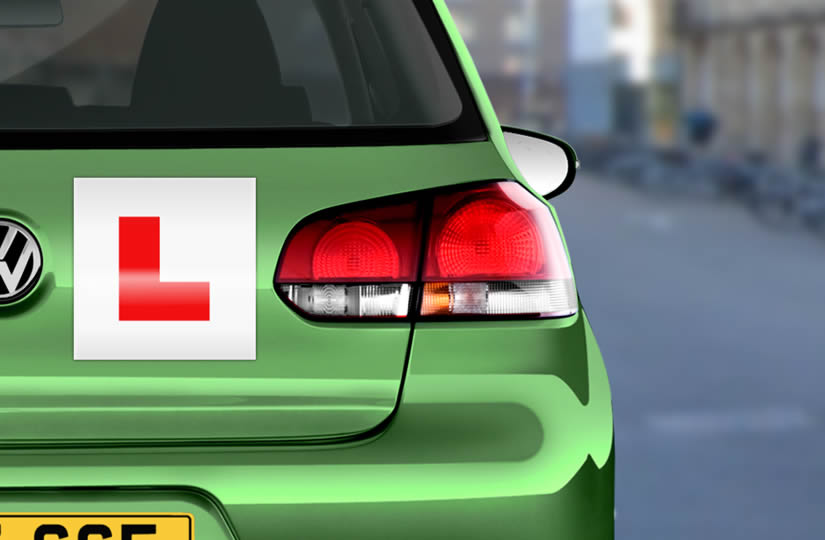It’s a legal requirement that learner drivers display L plates to warn other road users that a novice driver is under tuition. This should then encourage other road users to provide the learner driver with a little more time and space. Displaying L plates is usually a simple procedure, but if you have any questions, then hopefully we’ll get those answered below.
Do You Need Two L Plates on a Car?
Yes, you need to clearly display one on the front and one on the back of the car. When you purchase L plates, you’ll be provided with two.
Do L Plates have to be on the Outside of the Car?
There is no law that states L plates must be on the outside of the car, only that they are clearly visible to others from the front and back of the car.
Can You Put L Plates in the Window?
Although there are no specific laws that state that it’s illegal to attach L plates in the car’s windows, it’s highly advisable not to do so as they can restrict your peripheral vision. Another issue that can arise with having L plates taped inside your car’s window is that they can be difficult for other road users to see them if the sun is reflecting off the glass. As the Highway Code states that L plates must be clearly visible, it could potentially result in legal complications.
Additionally, if you are taking a driving test with L plates taped inside the car’s windows, the examiner is likely to refuse the vehicle based on reasons of safety.
Where to Put L Plates on a Car
Attaching L plates to the car’s bonnet is often a good area. Some driver’s attach them to the car’s front grille, though in this instance, it’s not recommended as it can restrict airflow to the engine and worse, if the plate comes free, you risk it entering the engine compartment. Remember, L plates must be clearly visible, so avoid placing them low down on the vehicle’s bumper where they could be difficult to see.

It’s up to you which side of the car that you put L plates on, the only condition is that they must be clearly visible to other road users. On the back of the car, mounting the L plates in a similar horizontal position to the brake lights ensures maximum visibility.

What if an L Plate Falls Off While I’m Driving?
It is annoying having to replace L plates, but it is a legal requirement for a learner driver to display an L plates at the front and back of their car. Failure to do so can result in 6 penalty points on their provisional licence. For this reason, it’s usually a good idea to carry a spare set in the vehicle.
What if My L Plates Fall Off During the Driving Test?
If during a driving test the examiner becomes aware that an L plates has come off the car, it then becomes an offence and the examiner has a duty to stop the test. For this reason, if you’re taking the driving test in your own car, take along a spare set of L plates with you.
How to Stop L Plates from Coming Off While Driving
There are two types of L plates, the stick on type and the magnetic type. The stick on L plates are the best solution in preventing them from coming off. However, there are some issues with the stick on variety; some people have complained that their car’s paintwork is damaged when the plates are removed and secondly, due to stick on plates not easily being removed, it can be a problem if the vehicle is shared by full licence holders as L plates should be removed if it’s not being used by a learner.
For those reasons, magnetic plates are usually the best option. Generally the plates where the underside of the plate is completely covered in magnetic material rather than just the edges work best.
Whichever plates you choose, it’s important that you clean the car’s paint surface prior to attaching the plates as a clean surface significantly helps to keep them secure. It’s also perfectly legal to round off the corners on L plates which may help to lesson the chances of them coming off.
What Happens if a Learner Drives Without L Plates?
If a learner driver is caught driving without L plates and police believe it’s a genuine mistake; one of the L plates has come off for example, it’s likely you’ll just receive a caution. If the police believe you’re intentionally driving without L plates, you’re committing the offence of ‘Driving otherwise than in accordance with a licence’ and could receive a fine and between 3 and 6 penalty points on your licence.
Even as a learner driver, the law considers you responsible because it’s the learner who’s ultimately in charge of the vehicle. As such, any fines and points will be charged to the learner driver.
Displaying L Plates When the Learner is Not Driving
It’s not illegal to keep the L plates on if the learner isn’t driving, but it is advised that they should be removed when the vehicle is not in use by a learner driver. The only exception is if it’s a driving school vehicle. The issue for displaying L plates when a full licence holder is driving alone in the vehicle is that it can give the impression that it’s an unaccompanied learner driver. This alone may increase your chances of being pulled over by the police who will run checks and ask you to remove the plates.
Can You Make your Own L Plates?
Yes, you can make and print off your own L plates. It’s perfectly legal, you just need to ensure they’re the correct size. You will of course also need to make sure that withstand various weather conditions. If you wish, you can download and print off two copies of these L plates.
Do L Plates have to be a Certain Size?
Yes, there is a regulation size that all L plates must abide by. By law, L plates must be:
- a red letter on a white background
- the size shown in the diagram

